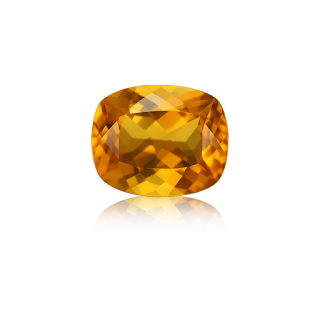In the vibrant world of gemstones, Heliodor stands out as a beacon of sunshine, captivating enthusiasts with its golden hues and mystical charm. Often dubbed the “Gift of the Sun,” this lesser-known member of the beryl family offers a unique blend of beauty, durability, and lore. Whether you’re a gem collector, jewelry lover, or metaphysical seeker, Heliodor’s warm glow and fascinating properties make it a gem worth exploring.
What is Heliodor?
Heliodor is a variety of the mineral beryl, sharing its lineage with renowned gems like emerald (green), aquamarine (blue), and morganite (pink). Its name derives from the Greek words helios (sun) and doron (gift), a nod to its signature golden-yellow to greenish-yellow tones. The gem’s coloration stems from trace amounts of iron (Fe³⁺) within its crystalline structure.
While often confused with “golden beryl,” the term Heliodor typically refers to beryls with a more intense, sunlit yellow, whereas paler varieties may be labeled simply as golden beryl. Ranging from lemony pastels to rich honey hues, Heliodor’s color spectrum evokes the warmth of a summer day.
History and Origins: A Journey Through Time
Heliodor’s history is as luminous as its appearance. Though not as ancient as emeralds or sapphires, it gained prominence in the early 20th century when deposits were discovered in Namibia. However, its geological roots trace back millions of years, forming in pegmatite veins and granite-rich environments.
Significant sources include:
- Brazil: Home to vibrant, high-quality specimens.
- Madagascar: Known for saturated golden tones.
- Ukraine: Produces gems with subtle greenish undertones.
- USA (North Carolina): A lesser-known source of collector-grade stones.
Unlike its famed cousins, Heliodor lacks extensive mythological tales, but its solar connection has linked it to deities of light and vitality across cultures. Modern crystal enthusiasts celebrate it as a stone of empowerment and clarity.
Physical and Metaphysical Properties
Physical Characteristics
- Hardness: 7.5-8 on the Mohs scale, making it durable for daily wear.
- Crystal Structure: Hexagonal, often forming prismatic crystals.
- Clarity: Typically eye-clean, with minor inclusions enhancing its natural charm.
- Luster: Vitreous, radiating a brilliant shine when faceted.
Metaphysical Beliefs
In holistic practices, Heliodor is revered as a stone of enlightenment:
- Solar Plexus Chakra: Believed to boost confidence and personal power.
- Energy Amplifier: Thought to enhance vitality and mental clarity.
- Emotional Balance: Said to dispel negativity and foster optimism.
(Note: Metaphysical properties are based on tradition and should not replace medical advice.)
Identifying Genuine Heliodor
With its growing popularity, distinguishing real Heliodor from imitations is crucial:
- Color Consistency: Natural Heliodor shows even color distribution. Beware of overly vivid stones, which may be dyed.
- Inclusions: Look for faint liquid or needle-like inclusions under magnification.
- Refractive Index (RI): Ranges from 1.57-1.58, detectable by gemologists.
- Hardness Test: It can scratch quartz but not topaz.
Common imitations include citrine, yellow sapphire, and glass. Always request a certification from reputable labs like the GIA when investing in high-value pieces.
Heliodor in Jewelry: A Sun-Kissed Statement
Thanks to its durability and brilliance, Heliodor is a favorite among jewelers. Popular applications include:
- Rings: Protective bezel or halo settings to prevent chipping.
- Pendants: Showcases its color in solitaire or accent designs.
- Earrings: Enhances complexion with warm undertones.
Cut Styles:
- Oval and Cushion: Maximize light reflection.
- Emerald Cut: Highlights clarity.
- Cabochon: Emphasizes softer hues in bohemian designs.
Pairing it with white gold or rose gold settings amplifies its golden glow, while diamond accents add sophistication.
Caring for Your Heliodor
To preserve its sparkle:
- Cleaning: Use lukewarm water, mild soap, and a soft brush. Avoid ultrasonic cleaners.
- Storage: Keep separate from harder gems like diamonds.
- Wear Mindfully: Remove during heavy physical activities.
Buying Guide: What to Consider
- Color: Prioritize vivid, medium-to-dark yellow tones.
- Clarity: Eye-clean stones are ideal, though minor inclusions are acceptable.
- Cut: Well-proportioned facets enhance brilliance.
- Carat: Larger stones are rare but affordable compared to emeralds.
- Certification: Ensures authenticity and quality.
Prices range from 50-300 per carat, depending on size and origin.
Heliodor vs. Other Beryls
- Emerald: Green due to chromium; often included.
- Aquamarine: Blue from iron; higher transparency.
- Morganite: Pink hues; softer color palette.
Heliodor offers a unique balance of rarity, affordability, and durability.
Conclusion
Heliodor is more than a golden gem-it’s a symbol of joy, resilience, and celestial beauty. Whether adorning a ring or serving as a talisman, its radiant energy continues to captivate. As you explore this sunlit treasure, let its glow remind you of the light within.














0 Comments